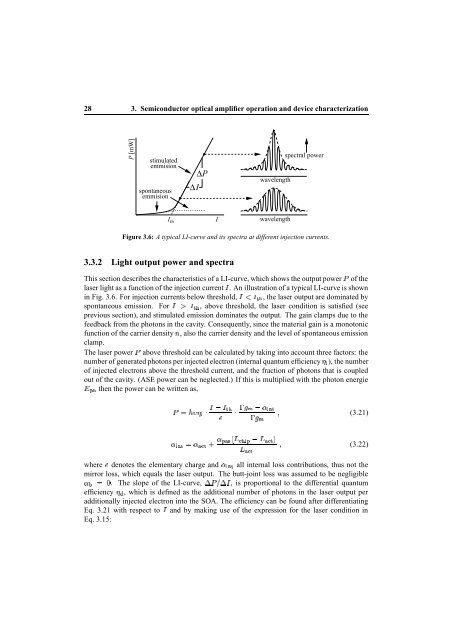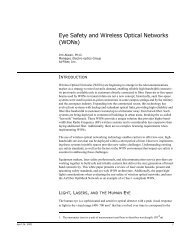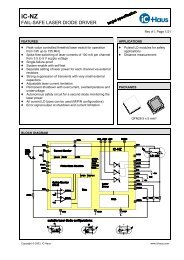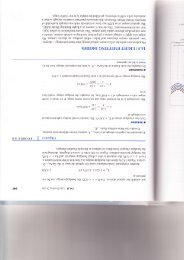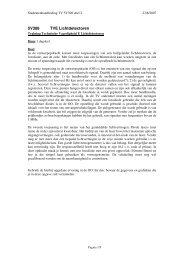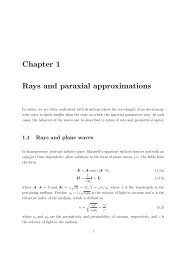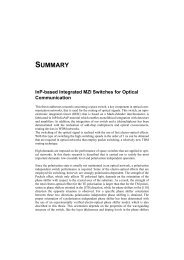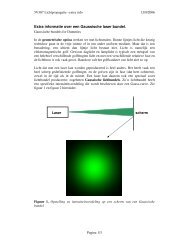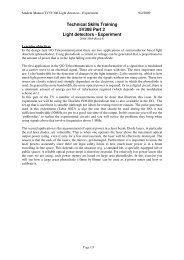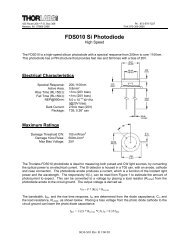A Wavelength Converter Integrated with a Discretely Tunable Laser ...
A Wavelength Converter Integrated with a Discretely Tunable Laser ...
A Wavelength Converter Integrated with a Discretely Tunable Laser ...
Create successful ePaper yourself
Turn your PDF publications into a flip-book with our unique Google optimized e-Paper software.
28 3. Semiconductor optical amplifier operation and device characterization<br />
[mW]<br />
P<br />
stimulated<br />
emmision<br />
spontaneous<br />
emmision<br />
Ith<br />
ΔI<br />
ΔP<br />
I<br />
wavelength<br />
wavelength<br />
spectral power<br />
Figure 3.6: A typical LI-curve and its spectra at different injection currents.<br />
3.3.2 Light output power and spectra<br />
This section describes the characteristics of a LI-curve, which shows the output power of the<br />
laser light as a function of the injection current . An illustration of a typical LI-curve is shown<br />
in Fig. 3.6. For injection currents below threshold, £ , the laser output are dominated by<br />
spontaneous emission. For © , above threshold, the laser condition is satisfied (see<br />
previous section), and stimulated emission dominates the output. The gain clamps due to the<br />
feedback from the photons in the cavity. Consequently, since the material gain is a monotonic<br />
function of the carrier density , also the carrier density and the level of spontaneous emission<br />
clamp.<br />
The laser power <br />
above threshold can be calculated by taking into account three factors: the<br />
number of generated photons per injected electron (internal quantum efficiency ), the number<br />
of injected electrons above the threshold current, and the fraction of photons that is coupled<br />
out of the cavity. (ASE power can be neglected.) If this is multiplied <strong>with</strong> the photon energie<br />
then the power can be written as,<br />
<br />
<br />
<br />
<br />
<br />
<br />
¡ <br />
<br />
(3.21)<br />
¡ <br />
¡ <br />
<br />
(3.22)<br />
¡<br />
where denotes the elementary charge ¡ and all internal loss contributions, thus not the<br />
mirror loss, which equals the laser output. The butt-joint loss was assumed to be negligible<br />
, is proportional to the differential quantum<br />
<br />
. The slope of the LI-curve, <br />
<br />
¡<br />
efficiency , which is defined as the additional number of photons in the laser output per<br />
additionally injected electron into the SOA. The efficiency can be found after differentiating<br />
Eq. 3.21 <strong>with</strong> respect to and by making use of the expression for the laser condition in<br />
Eq. 3.15:


